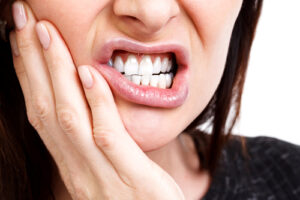Gum disease is the inflammation and swelling of the teeth tissues. There are two types of gum diseases, commonly known as gingivitis and periodontitis. These two arise when a person fails to observe proper dental hygiene. A person is said to have gingivitis when they have swollen red gums that often bleed during flossing or brushing. Gingivitis precedes periodontitis and is always a warning sign of a severe oncoming condition.
There are several causes of gum disease, and the most common one is poor oral hygiene. Lack of brushing or flossing of one’s teeth allows the bacteria found in food residues and plaques to be retained on the teeth and gums, thus infecting the gums. Other risk factors that promote gum disease include chewing tobacco, crooked or overlapping teeth, hormonal changes, and poor nutrition.
As earlier indicated, gingivitis and periodontitis are two different types of gum diseases. Gingivitis is the inflammation of the teeth gums, while periodontitis is the infection of the bone below the gums. Attachment loss occurs once the bone structure that supports the gums and teeth get infected. The gums then move away from the teeth, thus creating gum pockets. These deep pockets easily store bacteria and plaque, and since it is not easy to keep it clean, the destruction of the bones increases, thus increasing the chances of the teeth falling out.
Gum diseases always result in bad breath, which is commonly caused by the build-up of bacterial plaque on the tongue. The plaque is removed from the mouth through regular flossing and brushing. However, it is essential to note that it can take a while before the bad breath completely disappears. To reverse the effects of gum disease, one should maintain a constant routine of oral hygiene.
 There are several symptoms of gum disease, and a person can depict several common signs depending on the severity of the disease. One can have bad taste in their mouth with a constant mouth odor. Swollen gums tend to bleed during brushing or flossing. Plaques stuck on the gums and gums that seem to be moving away from the teeth. Pus can also be found between the teeth gums, changes in the teeth structure, and the dental formula, and lastly, loss of teeth.
There are several symptoms of gum disease, and a person can depict several common signs depending on the severity of the disease. One can have bad taste in their mouth with a constant mouth odor. Swollen gums tend to bleed during brushing or flossing. Plaques stuck on the gums and gums that seem to be moving away from the teeth. Pus can also be found between the teeth gums, changes in the teeth structure, and the dental formula, and lastly, loss of teeth.
When one visits a dentist who is the primary caregiver for all mouth-related issues, they use various means to diagnose gum disease. One of the ways is by measuring the patient’s gums. The dentist measures the depths of the gums to determine if the gums are healthy or not. Once gum depths exceed 1mm to 3mm the healthy gum range, a dentist can determine the severity of the gum disease.
A dentist can examine the sensitive gums and teeth and determine which ones are already loose. The use of X-rays also helps in showing a clear picture of the extent of the gum disease on the underlying bone.
Gum disease can be managed and cure by first identifying the factors that cause the disease as they vary from one person to another. It is important to note that most of the causes of gum diseases are eliminated by maintaining proper oral hygiene. Having professional cleanings by a dentist also helps a great deal. Reducing behaviors such as smoking will even reverse the effects of gum disease on an individual. Patients who have periodontitis will need root planning; this will enable them to clean the teeth that have been surrounded by deep pockets. Sometimes a surgical procedure can be done to reduce the depths of the gum pockets.
Laser therapy can also be carried out to help improve the health of the gums. A soft tissue laser is used in the laser therapy to remove the plaques and harmful bacteria and unhealthy tissue in the gum pockets and help fasten the healing
Antibiotic treatment will help eliminate the infection on the gums. Once the gums have healed, one should ensure that they maintain proper oral hygiene to prevent recurring gum disease. You should ensure you brush after every meal to ensure that plaque is not get stored in the gums. Flossing will also help eliminate the food particles between the teeth. After cleaning, ensure you use a mouthwash to kill all gingivitis causing germs found in the mouth.